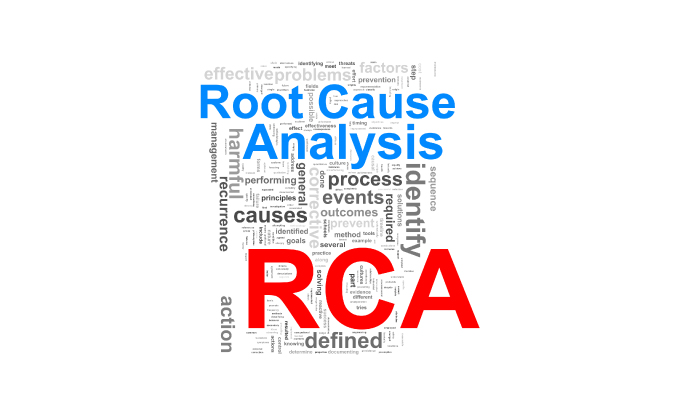Root cause analysis is a commonly used method that is used to identify root cause for a problem that may affect  productivity. This analysis is needed to determine the recommendations and actions for the organizations to implement and reduce risks occurring of a similar issue in the future. It is often used to respond to both repetitive problems (such as complaints, audit nonconformities, etc.) and critical incidents (such as accidents, outages, etc.).
productivity. This analysis is needed to determine the recommendations and actions for the organizations to implement and reduce risks occurring of a similar issue in the future. It is often used to respond to both repetitive problems (such as complaints, audit nonconformities, etc.) and critical incidents (such as accidents, outages, etc.).
Root cause analysis (RCA), in general, comprises several tools, processes and philosophies. They can be categorized based upon their field of origin into the following classes:
- Safety-Based RCA
- Production-Based RCA
- Process-Based RCA
- Failure-Based RCA
- Systems-Based RCA
Some of the most commonly used tools and techniques for RCA are:
- Five Whys Analysis: The Five Whys Analysis is arguably the most widely used technique for root cause analysis. In this, once the problem has been identified, one must ask why the problem occurred in the first place. If the answer is not amusing enough, another answer for Why must be sought. With every Why, more layers of complexity will get unlocked, and a more meaningful explanation for the problem’s root cause will surface.
- Failure Mode & Effects Analysis: Shortened as FMEA, this technique is used to identify the various modes of failure that exist within a system. The entries which are recorded while conducting this analysis include:
- All the failure modes
- The number of times a failure cause occurs
- Actions implemented to prevent reoccurrence of the cause
- Determining whether the actions are effective & efficient
- Pareto Analysis: This analysis puts into action the Pareto Principle (which means only 20% of the work leads to creation of 80% of the results). This is used when there are several probable causes for the same problem.
- Fault Tree Analysis: This analysis method uses Boolean logic to find the root cause of an unsought event. This method is often used for safety analysis and risk analysis. The undesirable event is listed at the top of the fault tree, and all the potential causes form up as its branches coming down.
- Current Reality Tree: This analysis method analyzes a system at once. It comes in handy when there are many problems by hand and you want to get to the root for all of them. The first step will be to create a current reality tree, listing all the problems at once. Towards the end, it will highlight the cause which is related to several problems.
To gain in-depth insight for Root Cause Analysis mechanism, join expert speaker Duke Okes in a live webinar, titled ‘A Step-by-Step Guide to Selecting the Right Tools for Root Cause Analysis’. Duke will discuss and demonstrate how system 2 thinking when combined with the right tools can increase problem diagnosis effectiveness significantly. He will also show how a structured approach to problem diagnosis, supported by visual tools that free up our brains for more powerful analytical thinking, can not only yield better results but also support better decision making in other areas.



